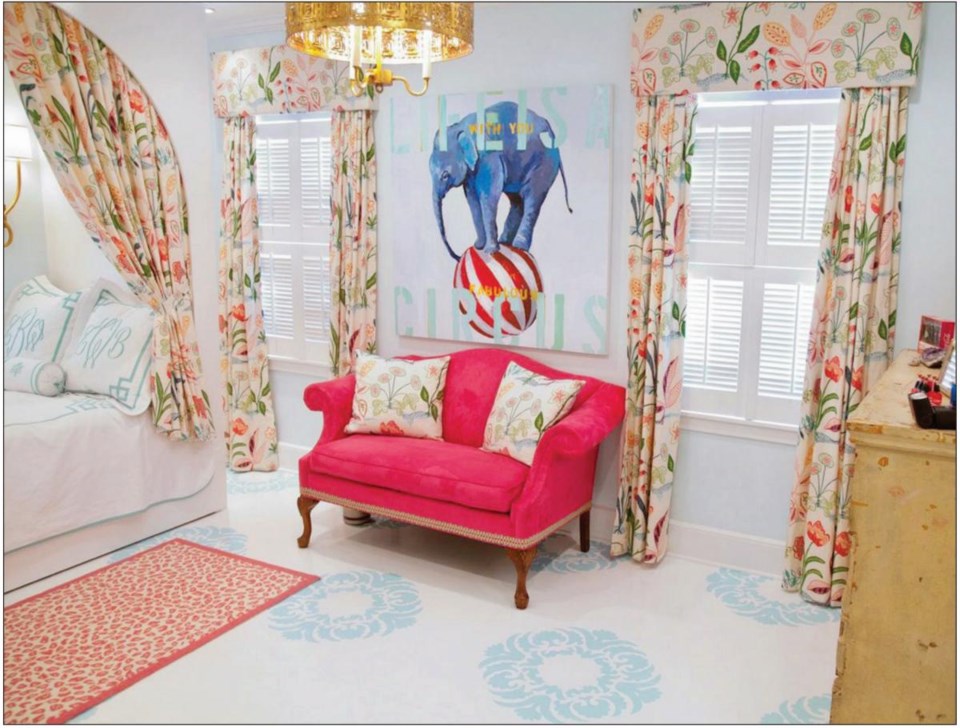When it became clear that allergies would prevent Nancy B. Westfall's infant daughter from having a rug in her room, the Atlantabased artist turned instead to paint, a few stencils and a plan.
Westfall used the baby's bedroom floor much like she would a canvas, painting on it a diamond-shaped pattern that gave the space a custom look you simply can't achieve with a kid's area rug.
Eleven years and another house later, Westfall remains a big fan of bringing floors to life with colour instead of covering them up.
"They look pretty refinished, and they look even better painted," Westfall says.
You don't have to be a professional artist like Westfall to do it, although proponents of painting the floor say it does require patience and nerve.
Rachel Cannon Lewis, an interior designer in Baton Rouge, Louisiana., encourages clients to consider it.
Painting a floor, whether it's wood or concrete, can be more affordable than tile, carpet or other floor coverings, she says.
And in homes that date back more than a century, painted floors are more historically accurate: Back then, people frequently painted their wide, plank wood floors to protect them from warping, Lewis says.
Plus, painting just looks good.
"I'm starting to think of the floor as the sixth wall," says Lewis, who considers floors "an overlooked opportunity to get creative and introduce colour." (The "fifth wall," by the way, is the ceiling).
Painting floors yourself can be a lengthy process, Lewis says, primarily because the thin, oil-based paint she recommends requires multiple coats, with lengthy dry times between each one. Getting fancier by, say, creating a pattern with paint or a stencil, requires even more patience and precision.
Even if you hire a professional painter, however, "You have to be willing to embrace the idea that it's going to be a different solution than what most people tell you to do," Lewis says.
"There are going to be friends who don't get it, and your mom is not going to get it," she says. "But I love the notoriety that comes with pushing the envelope and going for it."
Painted floors are not as durable as some of the alternatives, especially in high-traffic areas, says Sidney Wagner, an interior designer from Charleston, South Carolina.
"Over time, even with polyurethane, they will show scratches and the paint will scratchoff," she says. "However, a tip to help combat your floors from looking too shabby is to paint a contrasting layer of colour underneath. So when that second layer of colour comes through with the scratches, the marred floors will look planned with your colour scheme."
Carol Charny, a Larchmont, New York-based interior designer, says that painting floors requires a bit of throwing caution to the wind.
"You can do anything you want. The world is your oyster," she says. "You just have to disengage from fear."
In the home interiors shop she used to own, Charny used black and white paint to make the floor look like it was covered with an area rug, complete with fringe.
She warns that the margin for error grows with the complexity of the project.
"You're not going to paint an Oriental rug," she says.
On the other hand, the beauty of using paint is that, if something goes awry, you can cover it up.
"You have to relax," she says. "It's only paint."



